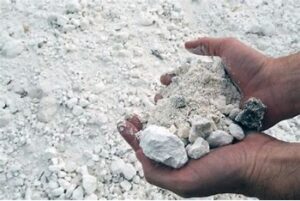What is your soil missing?
By Louis Kuisle | March 14, 2023
As we come into March, many of us who farm are looking at an increasingly bearish market on corn and soy futures. Inputs that were very high (when many of us bought them last fall) have started to dip back to sane levels. Many signs are pointing towards a normalization or “correction” of our commodity prices. Anything is far from certain in todays world, and current news out of South America on both beef shortages in Brazil and drought in Argentina are keeping things interesting. When caught between asking ourselves should I ramp up my fertilizer strategy now that its more affordable or is now is the time I should pull my horns in and hold on, looking at efficiency and fine tuning things is often the best option.
There is no shortage of new products on the market that can seem to be too good to be true. Many of these products are based on biologicals to fulfill their claims. An important rule of thumb for using any new product is that any biological product only helps/facilitates the plants uptake or utilization of macro and micronutrients. Some products are based on the premise that they can mineralize nutrients from the atmosphere – primarily nitrogen, the fact remains that any biologicals are a facilitator for base nutrient uptake.
Covering your bases on your fertility program should be the first and foremost step in achieving your ROI and yield goals. There are products on the market, primarily elemental and not biological, that will help free up nutrients that are too tightly bonded to your soil/organic matter. This may seem like a great strategy financially speaking, but without proper base saturation, this practice can lead to soil mining and poor soil stewardship.

Gypsum is a common sulfate mineral that has been used in agriculture for decades. Chemically speaking gypsum is calcium sulfate, not to be confused with lime which is calcium carbonate. Gypsum is both a good source of calcium and sulfur, but it also carries many other not so obvious benefits. Gypsum naturally increases the water holding capacity of soil. This ability to retain water reduces erosion and decreases N, P and K movement. In comparison to lime, gypsum will change the soil pH slightly, but shouldn’t be used as a stand-alone method to make soils less acidic. What it will do is promote better root development in acid soils without a big change in pH occurring. One of the most prevalent elements on earth is partly to blame for the yield hit crops on acidic soils take – aluminum.
Gypsum will counteract the toxic effects aluminum has on root development. Aluminum is typically not a problem for plants until the pH starts sliding down the scale to the acid end of the spectrum. As we know, lime is probably the most economical method of offsetting the negative effects of commercial and organic fertilizers on soil acidity, but it takes time to work. Depending on parent material the lime is sourced from, the results may take multiple years to show their effect. Using Gypsum on farms that have already fallen too far out of balance is something worth considering.
You may be thinking to yourself right now, “I can’t get rid of water fast enough on my farms, why would I want something that allows the soil to hang on to it better!” The fact is the soil profile improvements resulting from gypsum application can improve water infiltration through the soil. Though your soil itself may be able to sustain the hydrogen bonds with water and keep it in place more effectively, there is still only so much water soil can hold. We tend to look at soil as a uniform medium, but the mix of pore spacing, organic and inorganic particles, microbes and that water mentioned before creates more space for the excess water to flow. Increases in root development also increase aerobic activity and water infiltration as well.

Gypsum only fills a role as part of the fertilizer puzzle and is not necessarily needed every year, but it is a great product for the sustainability of a productive soil profile. Gypsum itself can be mined as a mineral, but is also available in a usable formulation as a byproduct from coal fired power plants. In summary, there is no silver bullet to soil health. Biologicals can undoubtedly play a big role in helping those macro and micronutrients feed your plants. Gypsum is far from a replacement for a natural or commercially supplemented soil biome, but it is a definite tool that should be considered.

